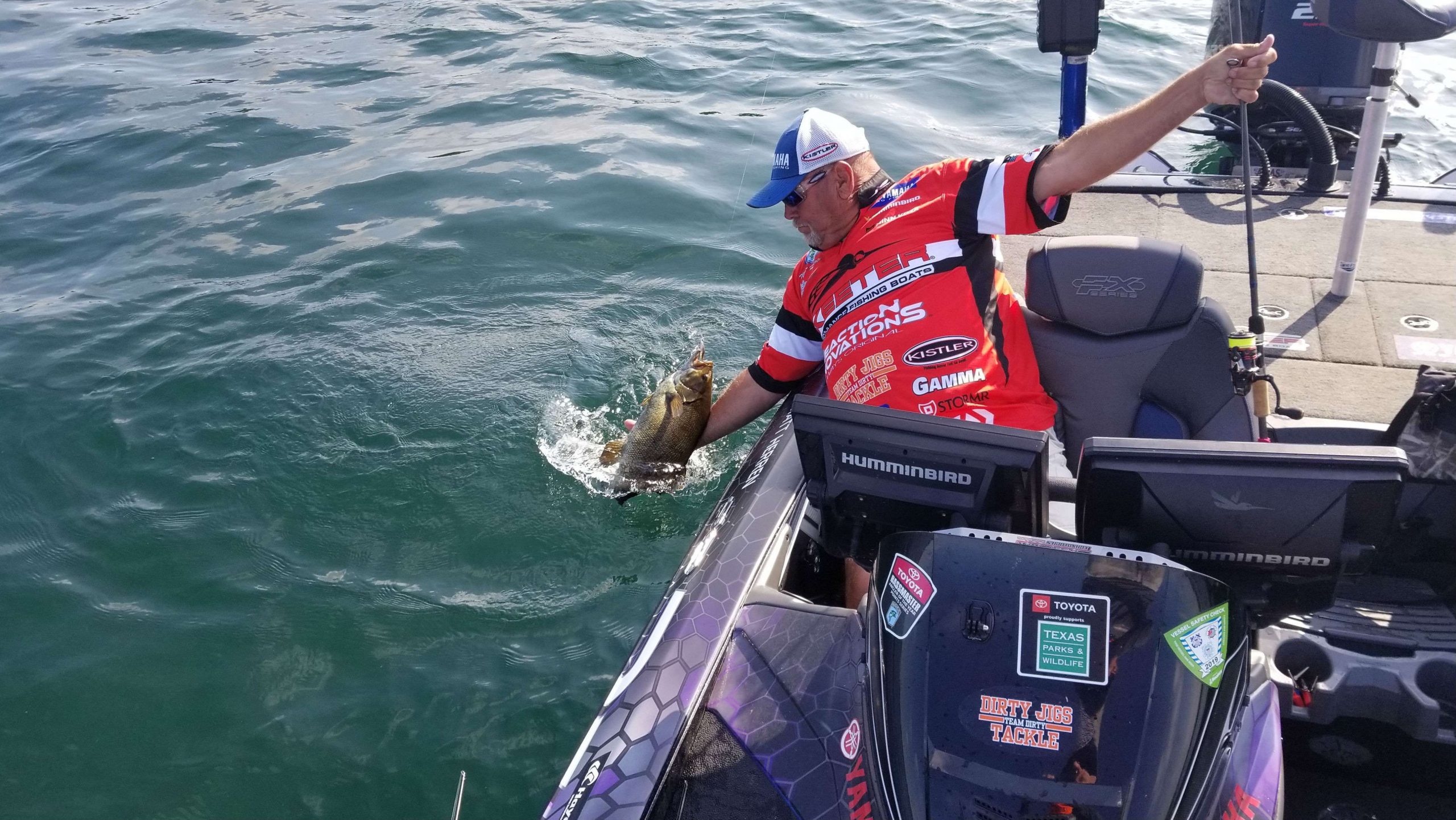
Something is happening in the fishing world right now, and I’m not sure that people even realize what is really going on…
The fall transition.
Had you thinking I was going to get into something serious, didn’t I?
Well, actually it is kind of serious. It’s fishing, and without being able to put a few of those slimy green suckers in the boat, none of us would really have anything to talk about.
But, seriously, in most parts of the country — and especially here in the South where I live — the fall transition happens a lot sooner than most people realize.
It really begins to happen as the long, hot summer days begin to shorten. In summer, the bodies of water have stratified into layers, and for the most part, the layer with the most oxygen content is the shallowest. The deepwater layers tend to lack quality oxygen content, except for the deepest, clearest reservoirs, and the bass tend to live shallow.
With that said, the oxygen content means that baitfish population also lives in the shallows. When the nights turn longer and the overnight temperatures start to dip a little, the initial triggers of cooling water and longer nights start the fall transition. That’s when the fishing can start to get really good.
Now is the time that all of that shallow bait begins to move into the pockets, and up the creeks and rivers. In that move, they will begin to utilize any cover they can while making the move. They will find edges of the grass, and stumps on flats or rocks along the way — really, anything that makes shade is something you can find baitfish around.
Once the bass begin to realize that this migration is happening, an angler can really take advantage of this period.
The actual techniques anglers can use to produce this time of the year will vary with the body of water, but some of my favorites include topwater baits like the Reaction Innovations Vixen, a PH Custom Lures Ploppin’ P or a Dirty Jig Canterbury Buzz with a Skinny Dipper swimbait rigged on it.
Squarebill crankbaits can be really good; I like to throw my PH Custom Lures Herren 2.0 Squarebill in the shallows around cover, because when it hits something, I can pause it and it floats up, allowing me to crawl it around cover.
This is a great time for a spinnerbait too. Depending on the body of water, anything from a 1/4- to 3/4-ounce bait will do the trick. In shallow water, like I have around the house on Neely Henry Lake, I like a 3/8-ounce bait with willowleaf blades because it mimics the shad, and I can fish it shallow or a little deeper.
Of course, vibrating jigs can be really good this time of the year too. While many of the bass will begin to key on shad, some will be focused on bluegill in the shallows, so either whites or green pumpkins will work well.
Last but not least, I can’t forget about the flippin’ bite. I will have my trusty Reaction Innovations Sweet Beavers at the ready for shallow cover. I will have something with a little shad flash at the ready and will have some bluegill colors too.
The keys to remember are these: The hot summer removed oxygen from the deeper layers, so the fish are going to be shallow and roaming, so keep moving, and they are the most catchable bass in the lake.
Well, in my world, things are getting down to the nitty-gritty. Everything is on the line with one more regular season event left in Oklahoma, followed by a 16-hour drive to one of the best smallmouth fisheries in the country at Lake St. Clair.
The Oklahoma tournament could be really tough due to the fluctuating muddy water that’s happened because of all the rain they’ve had in that region this year. That one’s kind of got me concerned. St. Clair and the AOY tournament should be an absolute smallmouth smash fest. If the winds cooperate, we should really crush ‘em there.
There’s a lot still to be decided here this season, and we’ve seen a lot of the unexpected. Two guys have come from 10th place to win on the last day, and with so much on the line, it’s still a wide-open Elite Series season. Who knows what’s gonna happen?





